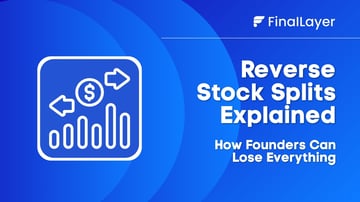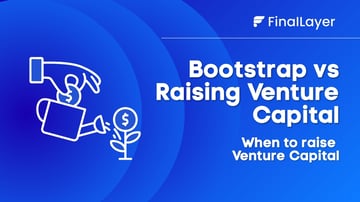Understanding when to pivot your startup and how to execute that pivot properly can determine whether your company survives or dies slowly with a toxic cap table. If you're a founder, you've probably heard about startup pivots way too many times, and knowing the difference between early experiments and true pivots becomes critical as your company matures. Before I was an entrepreneur, pivot was a word that described a funny scene from Friends, but in the last 10 years, this has become a word that I've come to both love and hate at the same time. The reality of startup pivots is that early stage changes are just experiments, while real pivots after achieving product-market fit at scale require shutting down and starting fresh to avoid the cap table problems that will otherwise kill your company. Most founders resist this approach because they worry about disappointing early investors, but this sentiment, while understandable, is exactly what destroys companies that could have succeeded with clean restarts.
Early Stage Changes: Experiments, Not Pivots
In the early stages of a startup, it is very common to go through a lot of idea pivots. You would be trying a bunch of things. You don't really know what is exactly going to work out for you.
So in many ways, I like to just call them experiments and not even pivots. A pivot in my mind should be used to describe something more serious, like you built something substantial, you tried out for a while, figured out that there is a better thing out there, or this doesn't have a market, and you decide to go do something else. Once again, if this is all happening before you had any success at all, that is one type of pivot.
And those are typically okay to do with the current investors with the current cap table, because most likely these things happen before you raised significant amounts of money.
The Dangerous Pivot: After Product-Market Fit at Scale
But occasionally, there will be situations like ours, where we have to pivot after you've seen significant success product market fit at scale. This happened to a bunch of companies during the dot com crash in the early 2000s.
This is the most dangerous type of pivot because your cap table reflects the old business, not the new opportunity. The equity distribution, investor terms, and board composition were all designed for the company you were building, not the company you need to become.
The Yodlee Example: How Smart Pivots Work
Yodlee is an example. They did really well during the dot com rise, and then they really struggled during the crash. And they had to pivot and they were able to get a new investor to write them a reset term sheet, which basically crammed down existing investors, and they redistributed shares to the team members who ended up staying.
And then they came out of that, and they were able to sell the company for $660 million, making money for everybody that were involved, including the ones that were crammed down.
This is the right approach. A reset term sheet that crams down old investors and redistributes equity to reflect the new business reality. Everyone made money because the company succeeded, even those who took dilution.
How Smart Investors Handle Major Pivots
Sometimes investors will actually do it themselves. If they have a portfolio company that needs to go through a major pivot, they will actually shut down the current company.
And if they still believe in the founders, they will spin up a new company, sell the old IP to the new company for a very small amount of money, and they will start up a new cap table. This is for intelligent investors who know that that is what is going to maximize the chances of success for that company.
Understanding the difference between smart money and dumb money becomes painfully clear in these situations. Smart investors understand that a clean restart maximizes success chances. Dumb money clings to equity in a dying business.
When Investors Don't Understand
But many investors, if they're not that savvy, will not see that, and they will want to hold on to their equity. And that is where all of the trouble begins.
These investors don't understand that their equity in the old business model is worthless if the company continues down that path. They see a pivot as destroying their investment rather than as the only path to potentially recovering any value. This creates an unfundable cap table that prevents you from raising new money for the new direction.
What We Should Have Done Differently
Now, as second time founders, if I ever caught myself in that situation again, I'll probably put my foot down and demand that we shut down and start a new company in that situation. But we weren't that savvy then as first-time founders.
Also, we were really concerned for our angel investors who were among the first ones to write checks for us. And some of them were friends and ex-colleagues who knew us well. Some of them invested for the first time ever in a startup.
So we kind of thought about that, and we felt like we would be doing them wrong if we shut down this company and started a new cap table. But at the end of the day, that was still foolish because this is not a viable option.
The Emotional Trap of Loyalty
This emotional attachment to early investors, while admirable, kills companies. Your angel investors, especially if they're friends or first-time startup investors, don't necessarily understand startup economics. They may feel hurt by a shutdown and restart, but they'll be even more hurt when the company dies slowly because the cap table made new funding impossible.
When you're pitching to angel investors initially, they should understand that pivots are part of the startup journey and that protecting their equity at the expense of company success helps no one.
The Golden Rule for Major Pivots
So if you're going through a major pivot, it is always, always a good idea to shut down and start fresh.
This doesn't mean abandoning your investors. It means creating a structure where everyone has a fair shot at success in the new business. Smart investors will participate in the new entity. Those who don't believe in the new direction can exit.
Understanding what it means to be a founder includes making hard decisions that seem disloyal but actually maximize chances of success for everyone involved. Founders who can't make these tough calls doom their companies to slow deaths.
Why Cap Tables Matter So Much
Your cap table tells the story of your company. When that story no longer matches your business, you have a fundamental mismatch. New investors won't touch you because the risk-reward doesn't work with the existing structure.
The cap table for a video technology company that raised $30M reflects that business model. If you pivot to AI infrastructure, that same cap table is now toxic. The valuations, liquidation preferences, board composition, and everything else reflects the wrong business.
This is why how you structure equity from the beginning matters. Every decision compounds over time, and major pivots expose all the structural problems that seemed fine when you were executing the original plan.
Learning from Mistakes
At FinalLayer, we're building with these lessons burned into our approach. We understand now that loyalty to the wrong structure helps no one. Clean cap tables with aligned incentives aren't just good practice, they're essential for company survival when business reality changes.
Sometimes the best education comes from learning what not to do. And we're applying every lesson learned about pivots, cap tables, and the hard decisions required to give companies the best chance of success.
If you're facing pivot decisions or dealing with cap table challenges, join our founder's Slack community where we discuss these situations with other founders who've navigated major business changes in the Founder Resources tab.

















